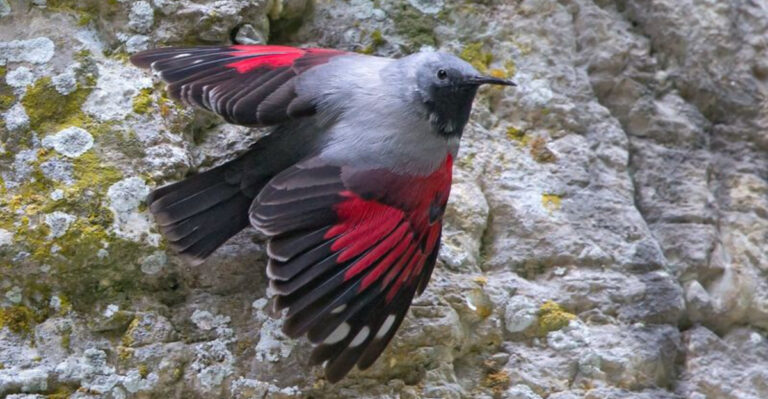13 Colossal Sea Creatures That Rule The Depths Of The Ocean
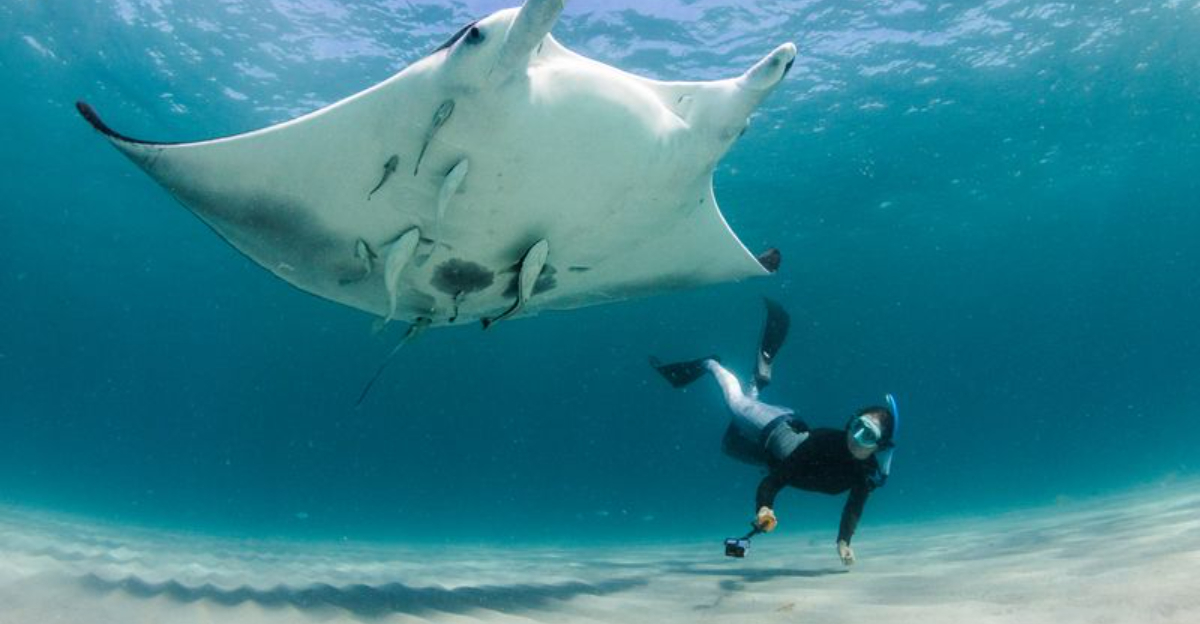
The ocean holds mysteries we’re still uncovering today. Beneath the waves lurk some of the most massive creatures on our planet – giants that have adapted to the crushing pressures and eternal darkness of the deep.
These colossal sea dwellers not only fascinate scientists but remind us how little we truly know about our oceans. Let’s explore some of the most impressive titans that call the deep sea home.
1. The Giant Squid
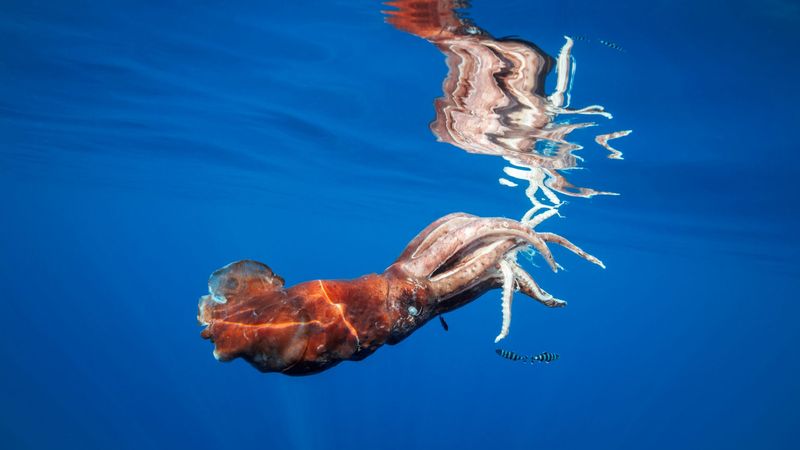
With eyes the size of dinner plates and tentacles that can stretch up to 43 feet long, the giant squid haunts the midnight zone of our oceans. Scientists rarely glimpse these elusive hunters alive in their natural habitat.
The first live footage wasn’t captured until 2004, making them more mysterious than many legendary creatures. Their battles with sperm whales have become the stuff of maritime legend, evidenced by sucker-mark scars found on the whales.
Despite their fearsome reputation, we’ve never documented a giant squid attack on humans. They remain one of the ocean’s greatest enigmas, silently hunting in the darkness where sunlight never reaches.
2. Blue Whale
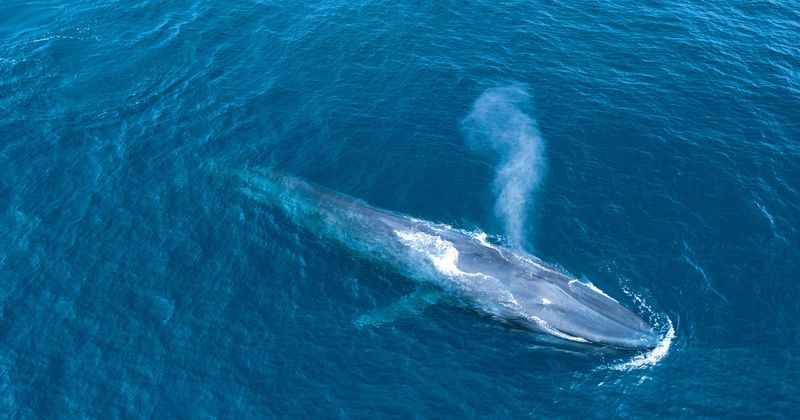
Imagine an animal so enormous that its heart is the size of a small car. Blue whales stretch longer than a basketball court at up to 100 feet and can weigh as much as 200 tons – more than 30 elephants combined!
Their tongue alone weighs as much as an elephant, and a child could swim through their largest blood vessels. When these gentle giants exhale, their breath shoots nearly 30 feet into the air, creating a spectacular fountain visible from miles away.
Despite their incredible size, blue whales feed almost exclusively on tiny krill, filtering thousands of pounds of these small crustaceans through their baleen plates each day.
3. Colossal Squid
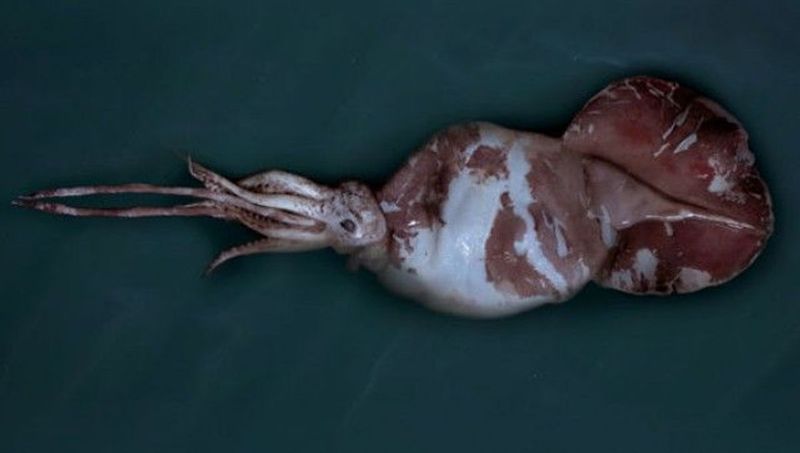
Armed with rotating hooks on its tentacles, the colossal squid makes its giant cousin look tame by comparison. These fearsome predators patrol the icy waters around Antarctica, growing to estimated lengths of 45 feet, though we’ve never captured a fully mature specimen.
Their eyes are the largest in the animal kingdom – about the size of dinner plates with built-in headlights. These bioluminescent organs help them spot prey in the perpetual darkness.
Scientists believe these monsters might be ambush predators, hovering motionless until unsuspecting fish or even small whales pass by. Then they strike with lightning speed, using their hook-lined tentacles to grab and shred their prey.
4. Whale Shark
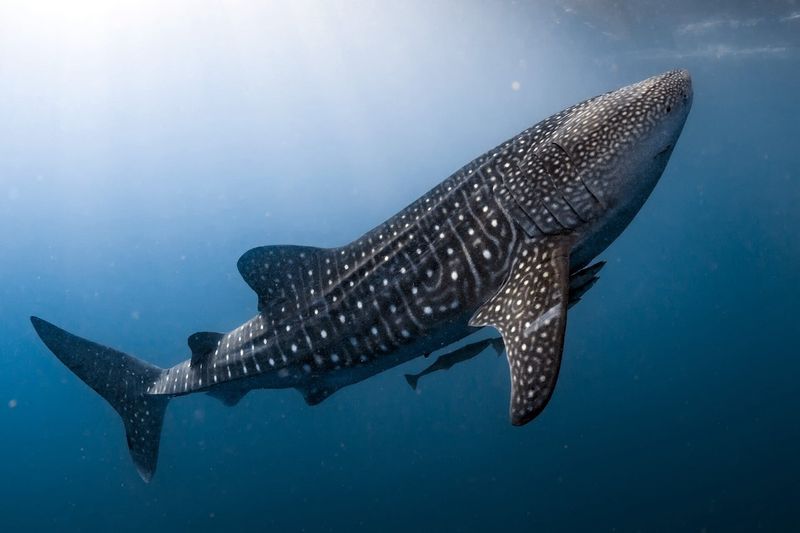
Don’t let the “shark” in its name scare you! These spotted behemoths are the ocean’s gentle giants. Growing up to 40 feet long and weighing as much as 20 tons, whale sharks hold the title of largest fish in the sea.
Their huge mouths can open over 4 feet wide, but they use them to filter-feed on tiny plankton and small fish. Each whale shark sports a unique pattern of spots and stripes – like a fingerprint that scientists use to identify individuals.
Despite their massive size, whale sharks move with surprising grace through warm tropical waters. Some lucky swimmers and divers can even swim alongside these peaceful creatures during their seasonal gatherings in places like Mexico and the Philippines.
5. Japanese Spider Crab
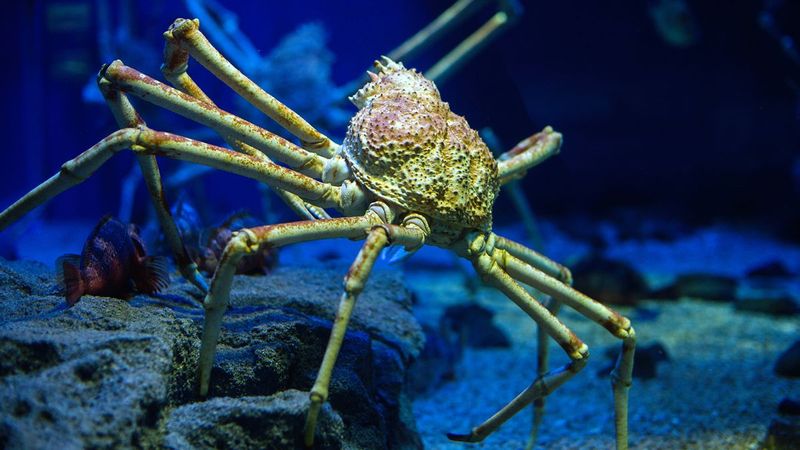
Imagine meeting a crab with legs that could stretch across your living room! The Japanese spider crab holds the record for longest leg span of any arthropod – up to 12 feet from claw to claw. They look like something from another planet as they creep along the ocean floor.
Found in the deep waters off Japan, these crabs can live for decades and continue growing throughout their lives. Their spindly legs help them navigate the uneven seafloor while their strong claws crack open shellfish and scavenge dead animals.
Despite their alien appearance, they’re not aggressive toward humans. Their orange-red shells provide perfect camouflage against the rocky seafloor where they make their home at depths of 1,000 feet or more.
6. Manta Ray
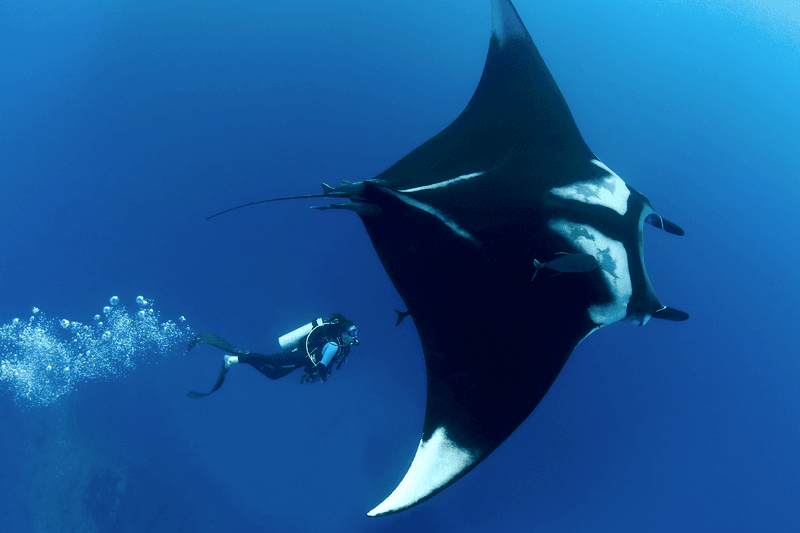
Manta rays soar through the ocean like underwater birds, their wing-like fins spanning up to 23 feet across. These massive creatures might look intimidating, but they’re actually gentle plankton eaters without stingers or teeth that could harm humans.
Each manta has a unique pattern of spots on its belly – like a fingerprint that helps researchers track individuals. Their huge mouths scoop up tiny food while special gill plates filter out the water. Most fascinating of all, mantas have the largest brain-to-body ratio of any cold-blooded fish.
Scientists believe they’re highly intelligent, capable of recognizing themselves in mirrors – a rare ability in the animal kingdom that suggests self-awareness and complex thinking.
7. Lion’s Mane Jellyfish
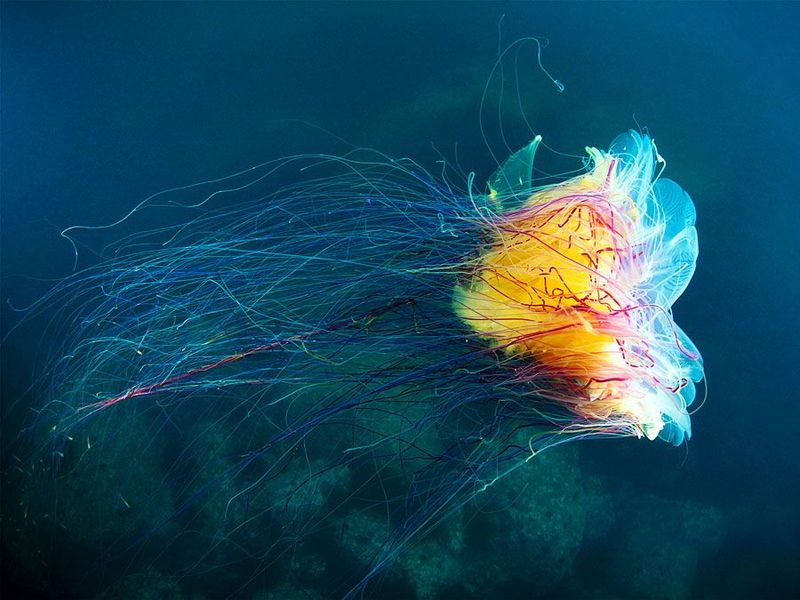
Trailing tentacles longer than a blue whale, the lion’s mane jellyfish is the longest animal on Earth. Its bell can grow to 8 feet across while its thin, hair-like tentacles may extend more than 100 feet, creating a deadly curtain in the water.
These Arctic giants glow with an otherworldly orange-red color, resembling an underwater sunset. Their thousands of stinging cells can paralyze fish and other small creatures that accidentally swim into their tentacles.
Though potentially dangerous to swimmers, these jellyfish are an important part of ocean ecosystems. They provide food for sea turtles and shelter for small fish that hide among their tentacles, protected from larger predators who avoid the jellyfish’s powerful sting.
8. Basking Shark
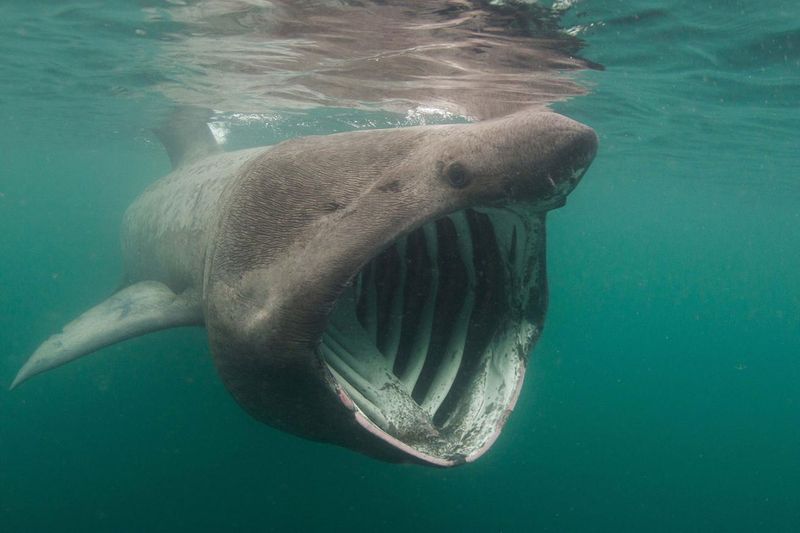
Swimming with its enormous mouth wide open, the basking shark looks terrifying but couldn’t be more harmless to humans. These giants are the second-largest fish in the ocean, growing up to 40 feet long and weighing as much as an elephant.
Their cavernous mouths can open more than 3 feet wide as they cruise near the surface, filtering over 2,000 gallons of water per hour. Thousands of tiny food particles get trapped in their specialized gill rakers while water flows back out through their gills.
Unlike most sharks, basking sharks are social creatures often found in groups. They’re so focused on filter-feeding that divers can sometimes approach closely enough to observe their massive gill slits and distinctive pointed snout.
9. Oarfish
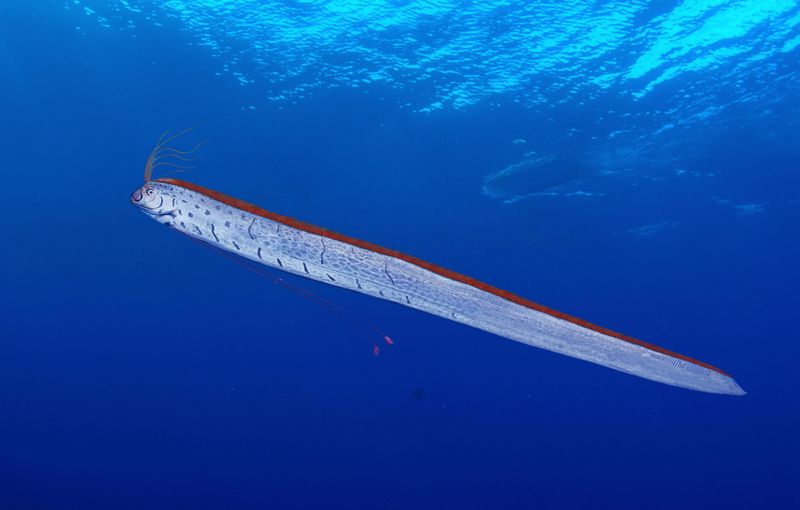
Looking like it swam straight out of a sailor’s nightmare, the oarfish may be responsible for many sea serpent legends. These ribbon-like fish can grow over 50 feet long, making them the longest bony fish alive.
They normally live in the deep ocean’s twilight zone, between 660 and 3,300 feet down. Humans rarely see them unless they wash ashore sick or dying. Their silvery bodies sport bright red dorsal fins that run the entire length of their snake-like bodies.
Japanese folklore considers oarfish sightings to be omens of earthquakes, though scientists haven’t found evidence supporting this belief. These mysterious creatures swim by undulating their bodies in a wave-like motion rather than using their tiny fins for propulsion.
10. Sunfish
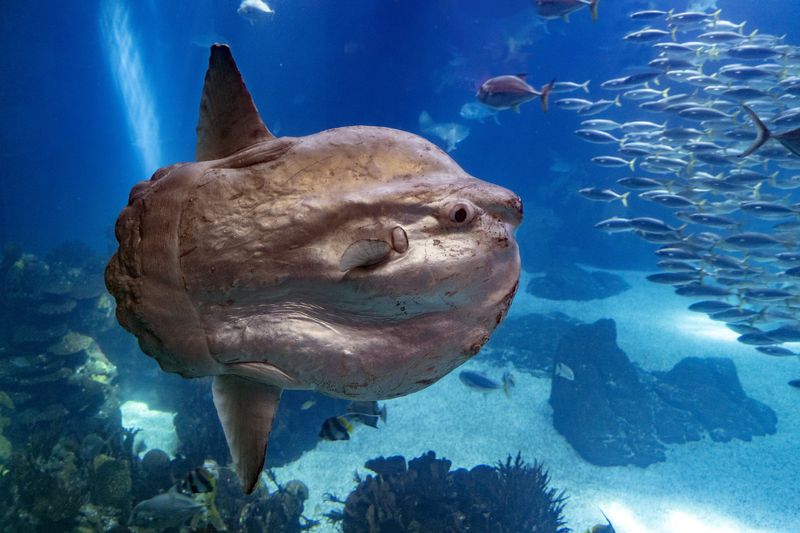
Imagine a fish that looks like someone cut it in half! The ocean sunfish (or mola mola) appears to be all head with a tiny rudder-like tail.
Despite their bizarre appearance, these giants can grow over 10 feet long, weigh up to 2.5 tons, and produce more eggs than any other vertebrate – up to 300 million at once! Sunfish spend their days basking at the ocean surface, warming themselves after deep dives hunting jellyfish.
Their skin is incredibly thick – up to 3 inches – and covered in a mucus layer instead of scales. These strange fish have even stranger habits.
They frequently jump completely out of the water (possibly to dislodge parasites) and will often lie on their sides at the surface, leading sailors to mistake them for floating debris.
11. Giant Pacific Octopus
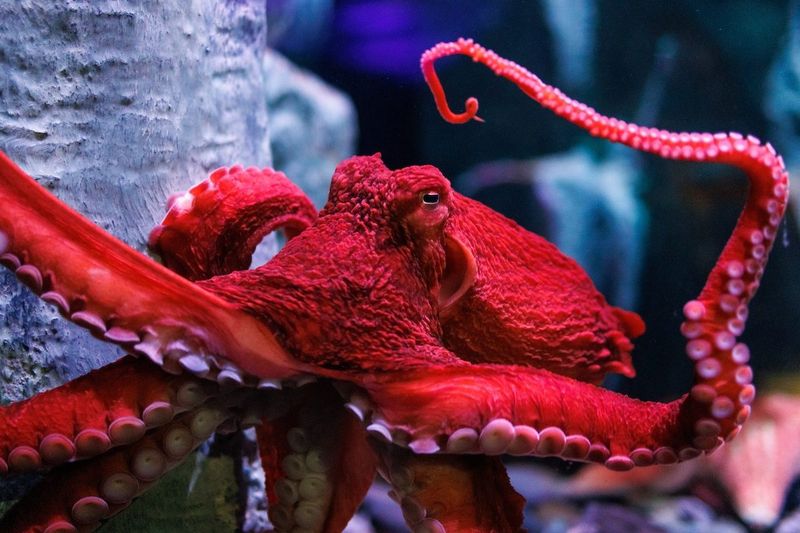
Meet the brainiest invertebrate in the ocean! The giant Pacific octopus can solve puzzles, open jars, recognize human faces, and even use tools. Their donut-shaped brains contain 500 million neurons – more than many mammals.
These eight-armed wonders can grow up to 16 feet across and weigh nearly 150 pounds. Each arm contains its own mini-brain and can act independently, covered in thousands of powerful suction cups that can taste what they touch.
Masters of disguise, these octopuses can change color and texture in less than a second to match their surroundings. They’ve been known to use coconut shells as portable shelters and even squirt jets of water at aquarium lights they find annoying – showing just how smart these ocean giants really are.
12. Leatherback Sea Turtle
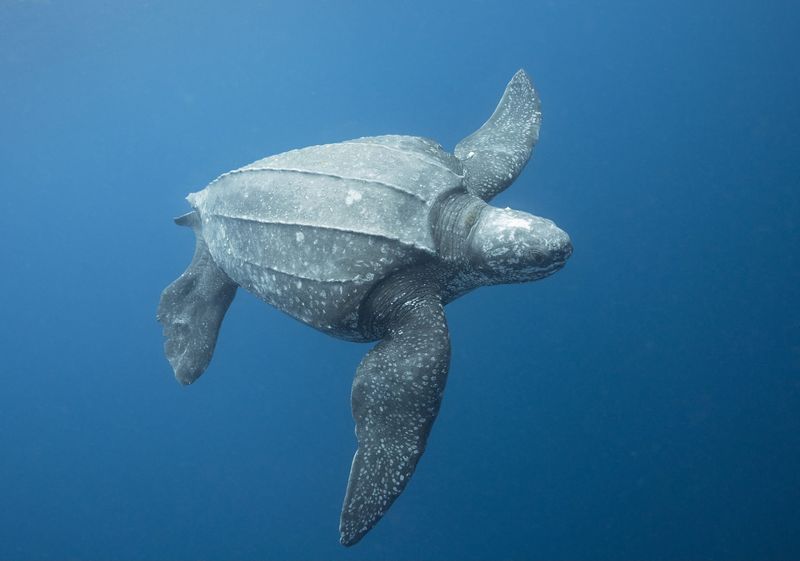
Dating back to the time of dinosaurs, leatherback sea turtles are living fossils and the largest turtles on Earth. Unlike other sea turtles, they don’t have a hard shell but a leathery carapace that can grow over 7 feet long while they weigh up to 2,000 pounds.
These amazing reptiles can dive deeper than any other turtle – plunging nearly 4,000 feet down hunting for jellyfish. Special adaptations allow them to maintain body heat in freezing waters, making them the most widely distributed reptile on the planet.
Baby leatherbacks start life smaller than your palm but grow rapidly on a diet of jellyfish. Their throats contain backward-pointing spines that help them swallow slippery prey while preventing the stinging tentacles from escaping.
13. Megamouth Shark
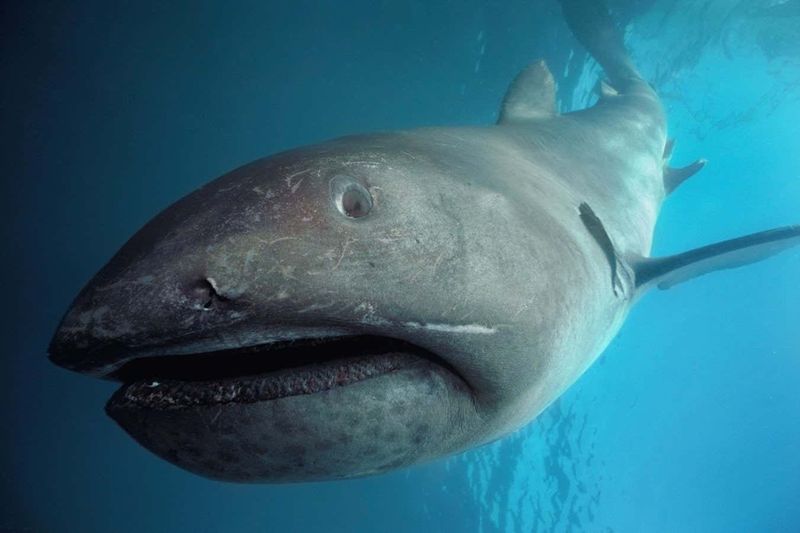
Creeping through the midnight zones, the Megamouth Shark is a true enigma of the seas. Unlike its more aggressive relatives, this gentle giant is characterized by its enormous mouth, which it uses to consume plankton and jellyfish.
The Megamouth rarely ventures close to the surface, preferring the comfort of deeper waters. Its appearance is somewhat clumsy, with a rounded snout and soft body, contributing to its peculiar charm.
Despite its considerable size, reaching up to 18 feet, it remains a benign presence in the ocean depths.


